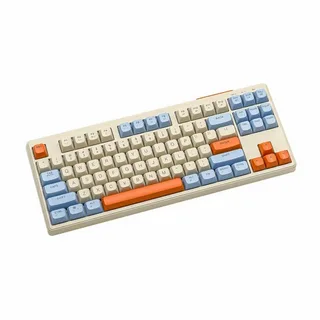When it comes to creating a comfortable and efficient workspace, ergonomics and the 87 keyboard play a vital role. Choosing the right keyboard can significantly impact your typing comfort, reduce strain, and boost productivity. In this article, we explore what makes the 87 keyboard a popular choice among ergonomic enthusiasts and what you need to know before making a purchase.
What Is the 87 Keyboard?
The 87 keyboard, also known as the Tenkeyless (TKL) keyboard, is a compact layout that omits the numeric keypad found on full-sized keyboards. With 87 keys instead of the standard 104, it saves desk space while retaining most essential keys. This design appeals to both gamers and professionals who want a minimalist setup without sacrificing functionality.
Why Ergonomics Matter
Ergonomics is the science of designing workspaces and tools to fit the user’s needs, promoting comfort and preventing injury. For people who spend hours typing every day, ergonomic considerations can prevent repetitive strain injuries (RSI), carpal tunnel syndrome, and general discomfort.
Ergonomics and the 87 Keyboard: The Perfect Pairing
The ergonomics and the 87 keyboard connection lies in the keyboard’s compact size and layout. By eliminating the number pad, users can keep their mouse closer to their body, reducing shoulder strain and encouraging better posture. Additionally, the smaller size promotes a more natural hand position and less wrist extension.
Many 87 keyboards also feature adjustable tilt legs, wrist rests, and mechanical switches, all contributing to a more ergonomic typing experience. These features allow users to customize the keyboard to their preferences, further enhancing comfort.
Who Should Consider the 87 Keyboard?
If you’re someone who prioritizes desk space, values portability, or suffers from wrist or shoulder discomfort, an 87 keyboard could be an excellent option. It suits both office workers and gamers looking for a more ergonomic setup without giving up essential keys.
Final Thoughts
Understanding ergonomics and the 87 keyboard relationship helps you make informed decisions about your typing tools. By choosing an 87 keyboard that aligns with ergonomic principles, you can improve comfort, reduce injury risk, and create a more efficient workspace.


